Tap water in most parts of the United States is contaminated with endocrine-disrupting chemicals, chlorine, fluoride and other toxins that are detrimental for optimal health. Additionally, tap water often contains elevated levels of certain minerals (such as manganese and iron) that can cause the build-up of black slime on aerators and shower heads.
That’s why, back in February 2021, we decided to purchase a high-quality water filtration system to purify (not soften) our entire home’s water supply. After extensive research, we invested in a whole house water purification system from Radiant Life.
In this article, I’ll share how Radiant Life’s Series 4 system works for us, why it’s different from traditional whole-house water softeners, and how it compares to the 14-stage biocompatible water purification system (reverse osmosis) that we use in the kitchen (in addition to our whole house water purification system).
Radiant Life Whole House Water Filtration System
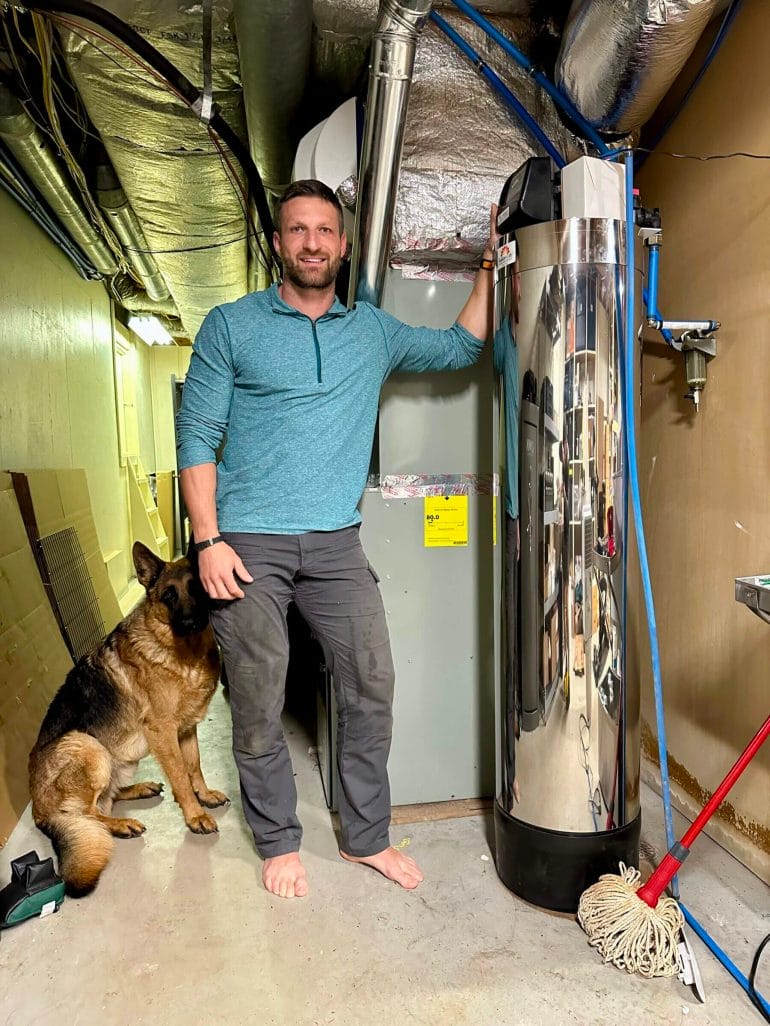
Summary
Investing in a whole-house water filtration system has been one of the best decisions we’ve ever made. The Radiant Life Whole House Filtration System (Series 4) ensures we can enjoy clean and safe water from every faucet by removing contaminants like chlorine, heavy metals, bacteria and viruses.
Importance of Clean Water for Health and Well-Being
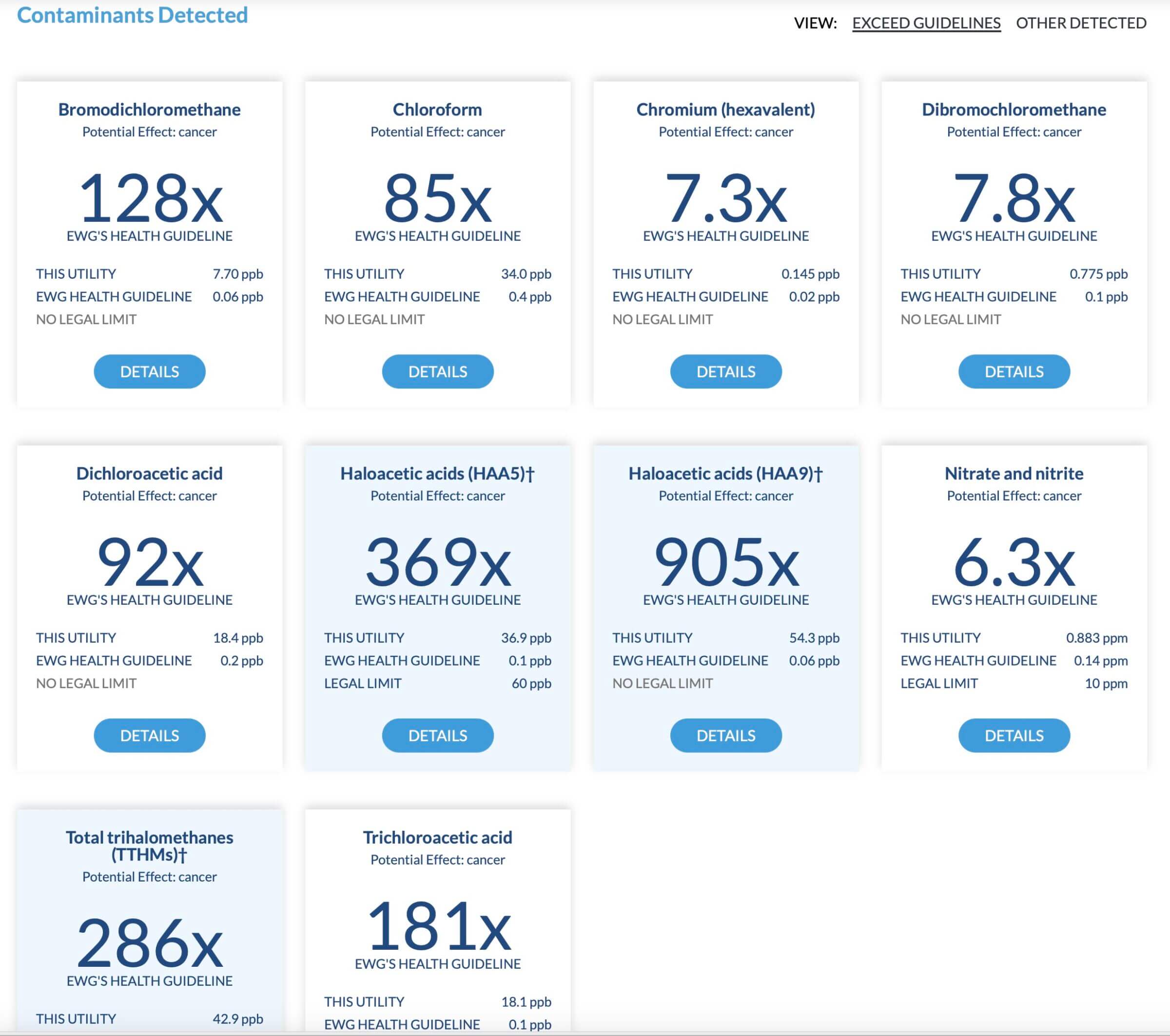
Having access to clean water is crucial for maintaining optimal health. But as bizarre as it may sound, finding water that is free of endocrine-disrupting chemicals and other toxins is incredibly difficult.
That’s because most water treatment facilities fail to remove chemicals such as hormones (from birth control pills) from drinking water, while at the same adding disinfectants and neurotoxins (such as chlorine and fluoride) to the water supply.
For example, a study by the United States Government Accountability Office that focused on untreated source water used by public drinking water systems found that 53 of 74 sites tested had at least one pharmaceutical present (many of which aren’t removed in water treatment plants, including estrogens from birth control pills).
Unfortunately, purchasing bottled water doesn’t help. Aside from the cost and environmental impact of plastic manufacturing and waste, all “food-grade” plastics also leach xenoestrogens (which mimic the sex hormone estrogen) into the water, thus making it hazardous.
Xenoestrogens can disrupt the microbiome in your mouth and gut (leading to chronic inflammation, reduced immune function, leaky gut and poor dental health), cause early puberty in girls, cause weight gain (and make it more challenging to lose weight), increase your risk of developing cancer and cause a host of other health issues.
That’s why it’s crucial to avoid drinking unfiltered tap water, as well as water from plastic bottles.
To learn what contaminants are lurking in your tap water, enter your zip code on the Environmental Working Group’s webpage.
Radiant Life Whole House Water Filter System (Series 4) Review
As mentioned in the introduction, we purchased the Radiant Life Whole House Filtration system in February 2021, and we’ve been incredibly satisfied with its performance.
One thing we immediately noticed after installing this whole home filtration system was the lack of chlorine smell when turning on the tap or taking a shower. As a result, our tap water finally smells and tastes clean.
Over time, we also noticed that the lack of chlorine (and other chemicals) in our shower water helped our skin retain more moisture. In other words, we no longer had dry skin after a shower or bath.
Additionally, the filtration system also reduced the hardness of our water a bit (by removing some but not all of the minerals that cause hard water). As a result, we can now use regular tap water in our Swiss espresso maker and no longer see water stains on our glass shower door.
Pros
- Comprehensive filtration process.
- Customizable options.
- Low maintenance requirements.
- High-quality components.
- Excellent customer support.
Cons
- Initial cost.
- Professional installation recommended.
Filtration Process and Technology
The Radiant Life Series 4 we have at home uses a combination of filtration media to purify the water from your municipal water supply, including an activated carbon filter (also known as catalytic carbon), a sediment base, and zeolite.
Zeolite is a mix of minerals (consisting of hydrated aluminosilicates of sodium, potassium, calcium and barium) that act as cation exchangers and molecular sieves.
In a way, the Series 4 mimics how water would be filtered in nature, when it flows through soil, sand, sediment, gravel and rocks under the influence of gravity (a process called percolation).
In addition to percolation, Radiant Life also leverages chemical filtration by allowing the negatively charged ions in the activated charcoal and zeolite media to attract and hold positively charged particles in heavy metals, pesticides and other pollutants.
The advantage of that approach is that it requires virtually no maintenance, such as replacement filters.
Note that to extend the life of the filtration media, the Series 4 comes with a sediment pre-filter to remove rust, sand and other sediments from the water before it enters the filter tank.
Removal of Contaminants and Impurities
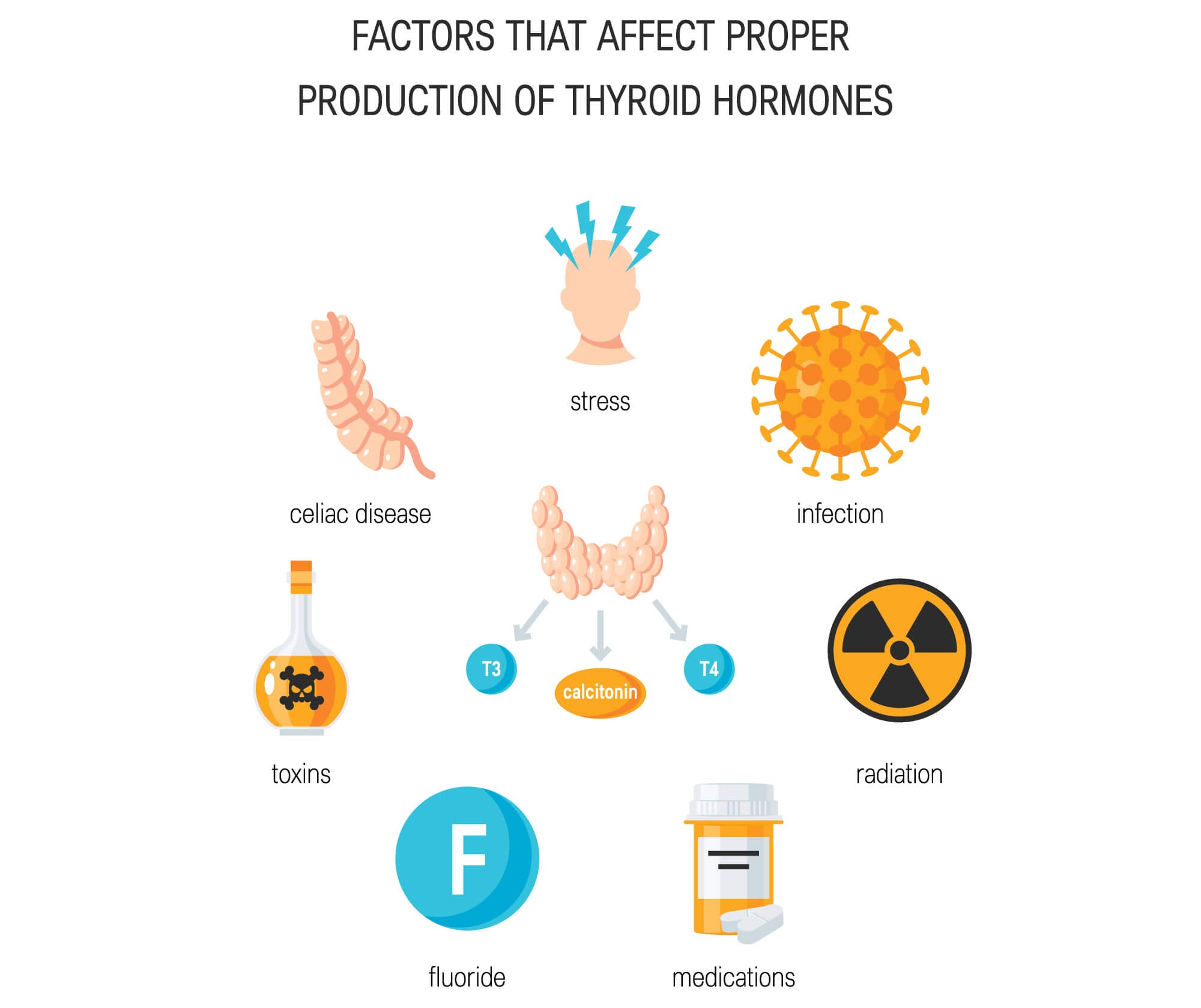
We decided to invest in a high-quality water filtration system rather than a whole-house water softener because the latter isn’t effective at removing most impurities in regular tap water.
Radiant Life designed its whole house water filtration system to remove a wide range of common water contaminants, including:
- Chlorine, which is the primary disinfectant found in domestic drinking water.
- Chloramines, which are organic compounds containing a chlorine atom bonded to nitrogen.
- Volatile organic compounds (VOCs) from pesticides, herbicides, paint, vehicle exhaust, cleaning products and other sources.
- Fluoride, which is a neurotoxin added to drinking water because it supposedly improves dental health. Aside from being a neurotoxin, a recent study found that even low-levels of fluoride in water correlated with an increased incidence of osteoarthritis (source).
- Heavy metals including arsenic, antimony, cadmium, chromium, copper, lead and manganese.
- Trihalomethanes (THMs), such as chloroform, bromodichloromethane, dibromochloromethane and bromoform (which are created when chlorine reacts with natural organic matter).
- Haloacetic acids (HAAs), which are another byproduct of drinking water disinfection with chlorine.
- Endocrine disruptors (such as estradiol from birth control pills) that make it into the water supply through wastewater recycling plants.
It’s worth pointing out that the Series 4 system we have at home is ideal if you’re connected to a city water supply. If you have well water, I recommend using the Series 6 filtration system instead, because it also removes iron, hydrogen sulfide, bacteria, algae and fungi.
Installation Process
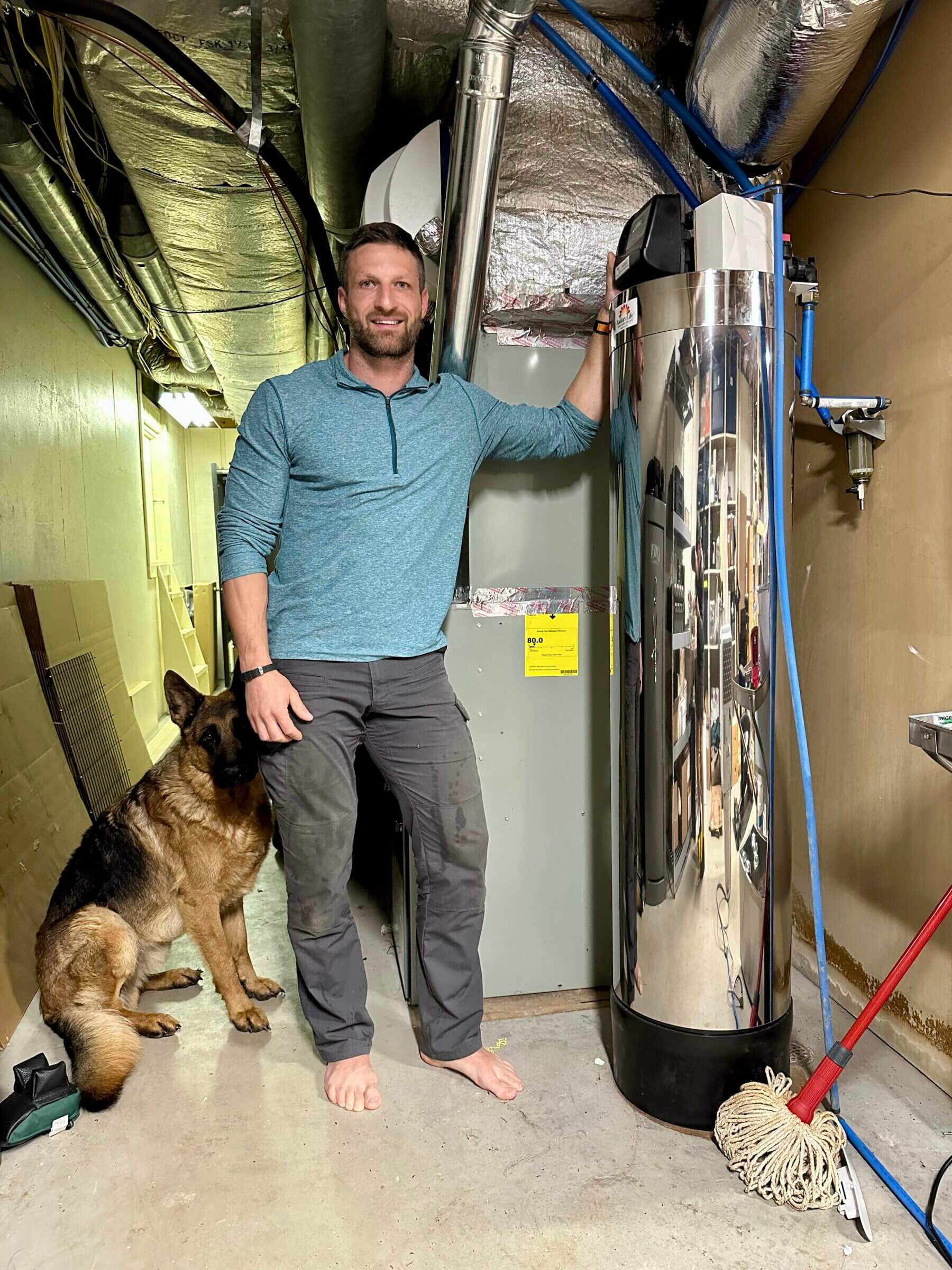
The main downside of the Radiant Life Whole House Filtration system (besides the initial cost, which I’ll touch on in the pricing section below) is that it has to be installed by a professional plumber (unless you know what you’re doing).
It took our plumber several hours to hook up the filtration system to our main water supply line, and we paid $1,050 for the work.
You’ll also need to consider the filtration tank’s space requirements.
Fortunately, we have an unfinished basement with most of our water pipes exposed, including the main water supply line. That made it relatively easy for the plumber to connect the system to our home. Plus, we had plenty of space for the tank right next to our HVAC unit, where the previous owner of the house had their water heater. (We use a tankless water heater that requires much less space.)
One thing we didn’t consider is the installation of a shut-off valve before the sediment filter, which would have made it easy to rinse out the filter housing without getting into the crawlspace to access the main water shutoff (as discussed below).
Maintenance Requirements

The best thing about the Radiant Life Whole House Filtration system is that it requires virtually no maintenance, except for flushing the sediment filter once a month.
The quickest way to flush the filter is to hold an empty bucket underneath the filter valve and turn it on for a few seconds (as shown in the image above). If your source water contains a lot of sediment (which gets trapped in the sediment filter), you might have to rinse out the filter housing.
To make that process as easy as possible, I recommend having the plumber install a shut-off valve before the sediment filter. This would allow you to turn off the water before removing the filter housing.
If you don’t have a shut-off valve (our plumber didn’t install one), you have to turn off the water at the main water shut-off. Ours is located in the crawl space where the city water line enters the house. This is no big deal for me, but it might be a problem for someone with mobility issues.
Keeping the sediment filter clean is important to optimal system performance and to maintain the longevity of the filter media in the filtration tank.
Beyond that, you don’t have to do anything on an ongoing basis to keep the filtration system running at peak performance. Specifically, there are no filter to replace, which I appreciate because it would add a chore to my to-do list and increase the total cost of owning the system.
Cost and Value Analysis
Besides requiring a professional plumber to install the system, the only disadvantage of the Radiant Life Whole House Filtration system is the initial purchase price.
In early 2021, we paid $3,735 for the Series 4, but the price has since increased to $3,935 for the 3-4 bathroom model.
Note that Radiant Life’s whole-house systems are sold based on the number of bathrooms they’re intended to cover. While they provide filtered water to the entire house, the assumption is that the primary draw on water pressure comes from the home’s bathrooms. Choosing the right size ensures sufficient water pressure when multiple taps, faucets or showerheads are in use.
The smaller unit, which covers 1-3 bathrooms, is available for $2,199, while the largest model (5+ bathrooms) will set you back $4,165.
Shop Radiant Life Whole House Filtration (Series 4)
The good news is that you can save 10% by using the code MKUMMER10. Depending on your chosen model, that can save you up to $465.
From a return on investment perspective, it’s worth noting that each filtration system lasts for approximately 10 years. In other words, we pay about $31 per month for clean water.
Considering the amount of water we consume (including our pets and livestock), I consider the Series 4 an excellent investment in our health and well-being.
Plus, the system is significantly cheaper than purchasing bottled water (if we weren’t concerned about the xenoestrogen exposure).
Side-By-Side Comparison
Before we decided to purchase the Radiant Life whole-house system, we looked at several alternatives, including whole-house water softeners and under-the-sink reverse osmosis systems.
In fact, we already had a reverse osmosis system in our kitchen, but considered purchasing a better one (continue reading to learn what I mean by that).
| Whole-House Filtration | Water Softeners | RO Systems | |
|---|---|---|---|
| Reduces water hardness | Some | Yes | Yes |
| Removes contaminants | ★★★★☆ | ★★☆☆☆ | ★★★★★ |
| Required maintenance | Very low | Medium | Medium |
| Initial investment | High | Medium-High | Low-Medium |
| Recurring cost | Zero | Medium | Medium |
| Whole house solution | Yes | Yes | No |
Reverse Osmosis Water Filtration Systems
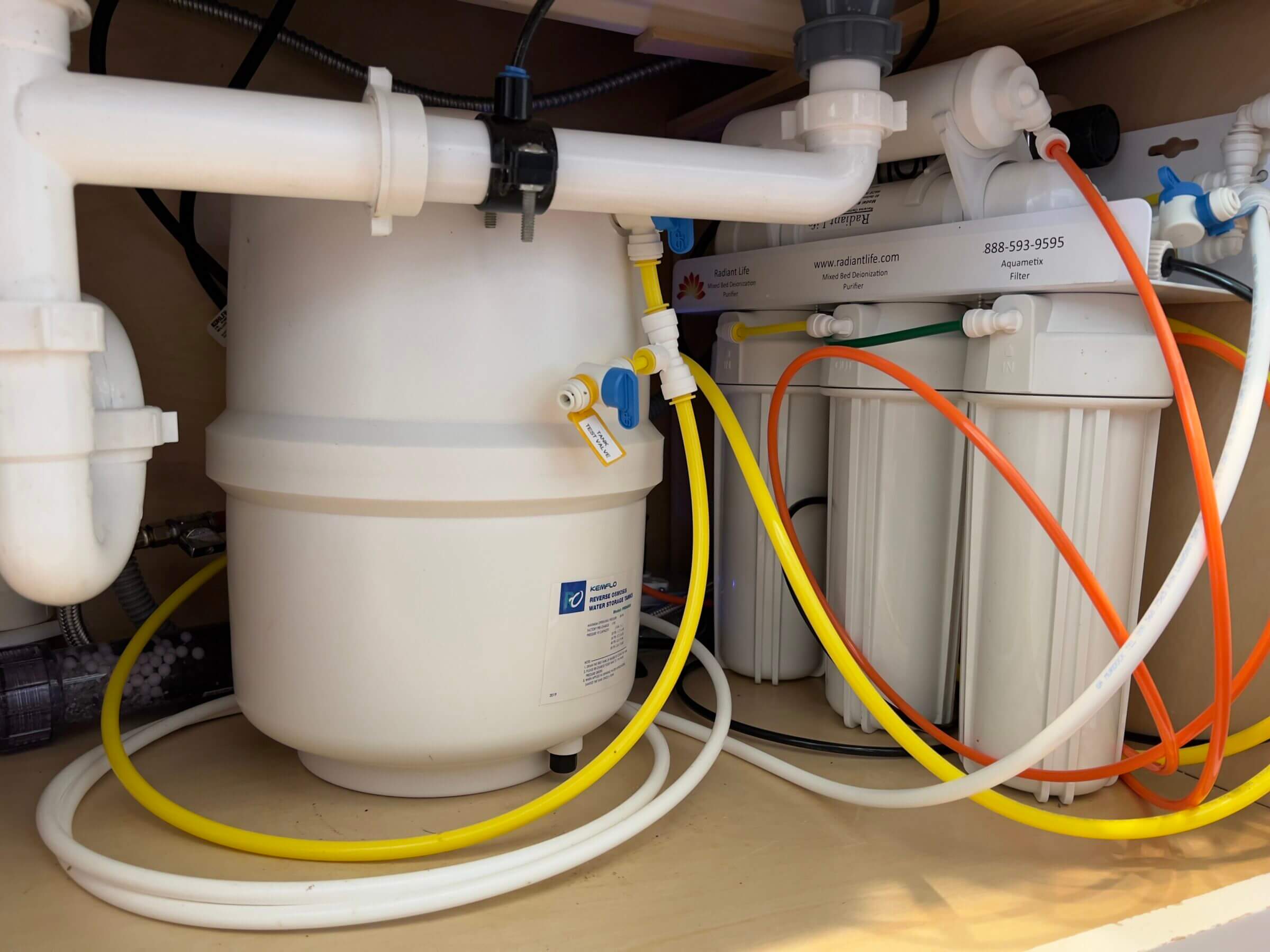
Reverse osmosis water filtration systems are the most effective way to remove contaminants from drinking water. The problem is that they’re not very efficient.
In other words, they waste a lot of water. About three gallons of water for every gallon of filtered water, in fact.
That’s one of the reasons why you normally only see reverse osmosis systems attached to a single faucet (usually in the kitchen, directly under the sink).
Another problem with reverse osmosis systems is that they produce water that’s devoid of micronutrients, including sodium, magnesium and calcium. From a health perspective, it’s not advisable to drink water without the micronutrients found in natural spring water. RO-filtered water can actually leach minerals from the body, leading to mineral deficiencies.
That’s why we replaced our previous reverse osmosis system with a 14-stage biocompatible RO system from Radiant Life, which remineralizes and restructures the water.
Of course, this adds to your cost.
We chose to invest in this restructuring reverse osmosis system in order to get the absolute best possible drinking water we could afford. (We also added a less expensive system from Cloud RO to our basement sink, for occasions when we’re working outside and want access to clean water.)
But if your budget is limited, I would invest in a whole-house system first. While this doesn’t deliver the best available purification, it does ensure that you have access to reasonably clean water from any faucet in your home.
In fact, I regularly drink water from our standard faucet, and we also use non-RO water for our coffee maker because the extra minerals in the water make the coffee taste better.
Whole-House Water Softeners
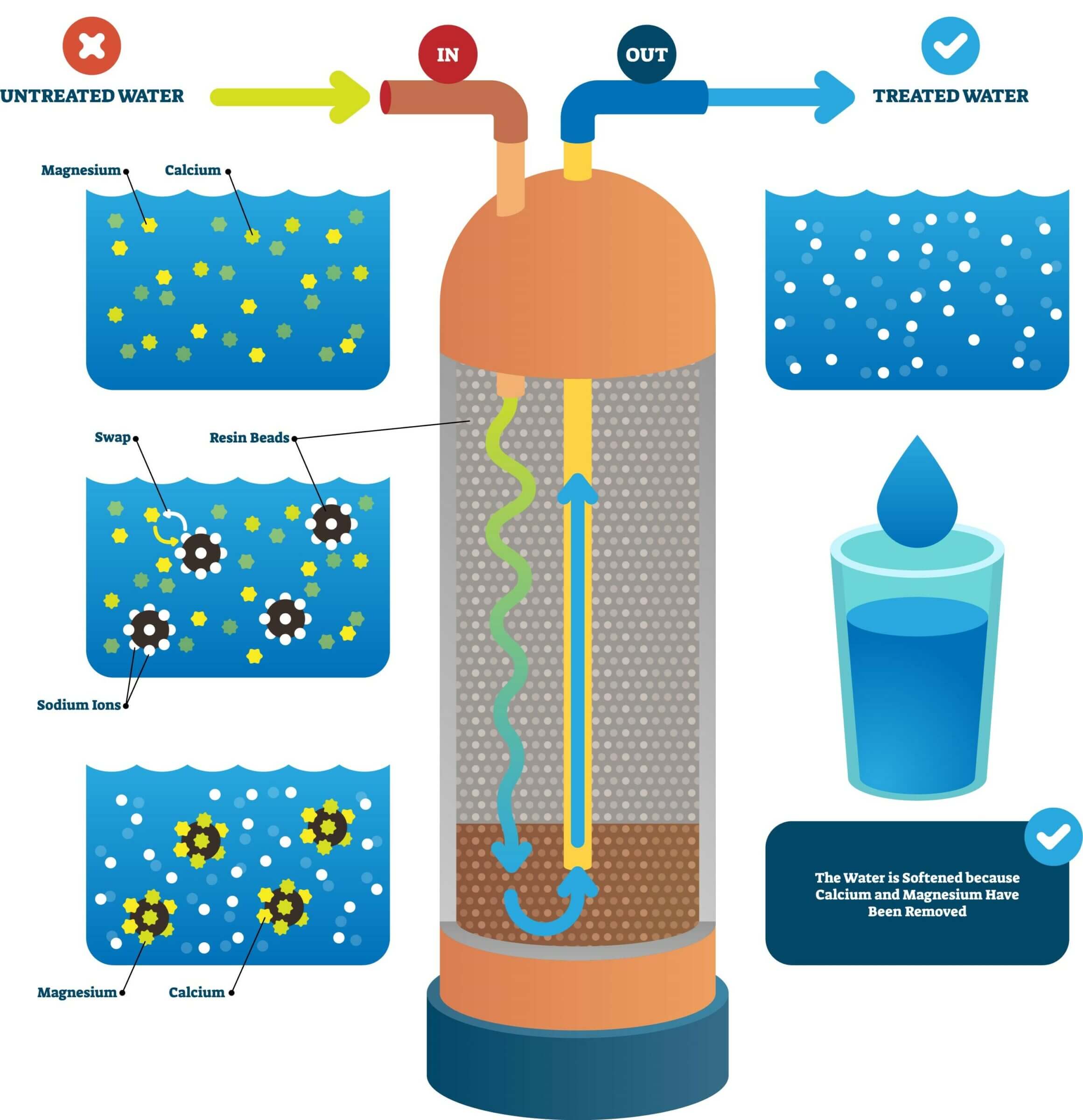
When I realized that installing a whole-house reverse osmosis system wasn’t feasible, I looked at traditional water softeners because they’re often less expensive than a true whole-house filtration system.
The problem with water softeners is that they aren’t very effective in removing contaminants from drinking water. Instead, they remove the minerals that make water hard (calcium and magnesium) through ion exchange.
Besides their ineffectiveness in producing clean drinking water, water softeners require ongoing maintenance, including cleaning the brine tank and replenishing the salt used in the ion exchange process. Additionally, softened water is usually loaded with sodium ions that make it feel slimy and slippery, and can affect how the water tastes.
Radiant Life vs. Aquasana

Before purchasing the Radiant Life whole-house water filtration system, I considered the less expensive Rhino from Aquasana.
However, after looking at the detailed specifications of the Rhino, I decided not to pursue it. Despite its ANSI certifications, the optional UV filter, the salt-free water conditioner and the lower price, I realized that Aquasana’s filtration performance appears to be nowhere near that of the system from Radiant Life.
Additionally, the Rhino has significantly more parts that can break and require ongoing maintenance, including filters.
The combination of those factors made Radiant Life the obvious choice for us.
More Tips to Improve the Quality of Your Water
Besides installing a whole-house water filtration system like the one discussed in this article, here are a few tips you can implement to improve water quality.
- Avoid water in plastic bottles. The plastic used to make bottles (and food storage containers, for that matter) contains endocrine disruptors that are terrible for your health. Don’t get fooled by the BPA-free label, because virtually all plastics leach xenoestrogens into water. Use stainless steel or glass bottles and containers only.
- Use simple charcoal filters if more effective filtration options aren’t available. The filter built into your fridge is good enough to remove most (but not all) contaminants in tap water. If you don’t have a built-in filter, consider a Britta pitcher.
- Ditch your garden hoses because they contain lead and toxic plasticizers. We replaced all our garden hoses with safer alternatives from Water Right. Now I can rest assured that my cold plunge tub, our veggie garden and the water barrels for our livestock are free of those chemicals.
- Consider a stainless steel water bottle with a built-in charcoal filter for when you travel. We use insulated bottles from Clearly Filtered any time we travel and don’t know if we’ll have access to clean water.
If you know of any tips I haven’t listed above, please leave a comment below, and I’ll make sure to include them here.
Frequently Asked Questions
Using a simple Britta filter is an effective and affordable way to remove some of, but not all of, the contaminants found in drinking water.
For example, Britta’s charcoal filters remove chlorine and many endocrine-disrupting chemicals from tap water, but they don’t remove certain heavy metals (e.g., lead or arsenic), microorganisms (e.g., viruses and bacteria), pharmaceuticals and pesticides.
If you’re looking for an effective countertop water filtration system, I recommend this NSF-certified Radiant Life countertop water filter, which removes micro-plastics, most heavy metals, herbicides and pesticides, pharmaceuticals, PFOA, PFOS and VOCs, among other impurities.
Yes, there is a difference between a water purification system and a water filtration system, although the terms are often used interchangeably. The differences lie mainly in the types of contaminants each system can remove.
A water filtration system physically removes impurities from water by passing it through one or more filters. These filters can be made of different materials, such as activated carbon, ceramic or other substances, and they can remove contaminants like dirt, sediment, and certain bacteria and parasites. However, standard water filters may not effectively remove certain chemicals, heavy metals or viruses.
A water purification system typically employs methods that remove or kill virtually all types of contaminants, including those that standard filtration may miss. These systems can include processes like distillation, disinfection (using chemicals, ultraviolet light or heat), and reverse osmosis. The goal of a water purification system is to produce water that’s safe for human consumption (even from sources that are heavily contaminated).
In short, all water purification systems filter water, but not all water filtration systems purify water to the same extent. The best system for a given situation depends on the quality of the incoming water and what contaminants are present in it. The good news is that the Radiant Life whole house water filtration system removes many of the contaminants (including heavy metals and certain chemicals) missed by traditional water filters.
The NSF is a recognized, autonomous entity that conducts tests and provides certifications for products to confirm their compliance with established public health and safety standards. Radiant Life carries several NSF-certified water filtration systems, including the Direct Connect and SS Gravity Countertop filter. However, the company’s whole house filtration systems aren’t NSF-certified.
The activated charcoal and zeolite media of the Series 4 can remove some radioactive particles, such as radium and radon. However, it’s worth mentioning that whole house water filters aren’t as effective at removing radioactive particles as reverse osmosis (RO) filters are. The latter can remove up to 99% of the most common radioactive elements found in water.
The Radiant Life Whole House Filtration system produces clean water that’s good for your health. However, to get the cleanest water possible, you can add a high-quality reverse osmosis system at the point of use (e.g., your kitchen sink). When considering an RO system, choose one that remineralizes the water. My favorite RO system is the 14-stage biocompatible RO system from Radiant Life.
While most people can install an under-the-sink RO filtration system on their own, installing the Radiant Life Whole House Filtration system involves several steps that often require the help of a professional plumber.
Our plumber and his assistant had to cut our main water line (inside the house) to force the water to go through the filtration system before reaching other areas of the house.
Despite knowing what they were doing, it took them several hours to set everything up. So I don’t think I could have done that myself. However, if you’ve completed plumbing projects in your house in the past and feel comfortable cutting, gluing and soldering pipes, go for it. I’d just recommend having a plumber on standby in case something goes wrong.
The Radiant Life Whole House Filtration system requires virtually no maintenance, and you don’t have to worry about filter replacements. I only flush the sediment filter once a month, which takes less than 30 seconds.
The Radiant Life Whole House Filtration System Series 6 works with wells and municipal water. Series 4 works with municipal water only.
You can find a breakdown of all the contaminants removed by Series 4 and Series 6 here.
Radiant Life offers a 10-year warranty on the tank and controls to cover defects in materials and workmanship. The filter media comes with a five-year warranty.
The Radiant Life Whole House Filtration system doesn’t restructure water by default, but you can purchase a separate Whole House Structured Water/Revitalizer. I don’t know if that was an option when we purchased our system, but I’m seriously considering adding that to our home.
Yes, I strongly believe that a whole-house water filter is worth it because it ensures access to clean drinking water free of chlorine, fluoride, hormones, heavy metals and other contaminants that negatively impact your health and well-being. Over 10 years, a whole-house water filter costs between $20 and $40 per month. That’s significantly less than purchasing bottled water. Plus, whole-house filters require less maintenance than water softeners or RO systems.
The maximum flow rate of Series 4 and Series 6 is 10 to 15 gallons per minute (GPM), depending on the system size you choose.
No, the Radiant Life Whole House Filtration system doesn’t negatively impact water pressure (unlike most reverse osmosis systems) if you pick the correct-size system based on the number of bathrooms you have. If you don’t, you might experience reduced water pressure if everyone in the house takes a shower at the same time.
So it’s important to pick a system that was designed for the number of bathrooms in your home. We have three bathrooms in our home but use only two (unless we have guests). Since I like to err on the side of caution, we purchased a system that accommodates three to four bathrooms without any issues.
The filter media in Series 4 and Series 6 have a lifespan of approximately 10 years or 1,000,000 gallons.
Radiant Life Water Filter Review: Summary & Final Verdict After Two Years of Use
Investing in the Radiant Life Whole House Filtration System was one of the best decisions to ensure reliable access to clean drinking water and to support our overall health and well-being.
I love knowing that my entire family and our animals can get clean water from any faucet in our home without worrying about ingesting chlorine, fluoride or birth control hormones.
I can also rest assured that I don’t negatively impact the health of my skin when taking a shower or ice bath. In fact, none of us suffer from dry skin anymore — something we all suffered from in the past, when our shower water was contaminated with the toxic disinfectants the city was adding to our water supply.

Michael is a healthy living enthusiast and CrossFit athlete whose goal is to help people achieve optimal health by bridging the gap between ancestral living and the demands of modern society.
Medical Disclaimer
The information shared on this blog is for educational purposes only, is not a substitute for the advice of medical doctors or registered dieticians (which we are not) and should not be used to prevent, diagnose, or treat any condition. Consult with a physician before starting a fitness regimen, adding supplements to your diet, or making other changes that may affect your medications, treatment plan or overall health. MichaelKummer.com and its owner MK Media Group, LLC are not liable for how you use and implement the information shared here, which is based on the opinions of the authors formed after engaging in personal use and research. We recommend products, services, or programs and are sometimes compensated for doing so as affiliates. Please read our Terms and Conditions for further information, including our privacy policy.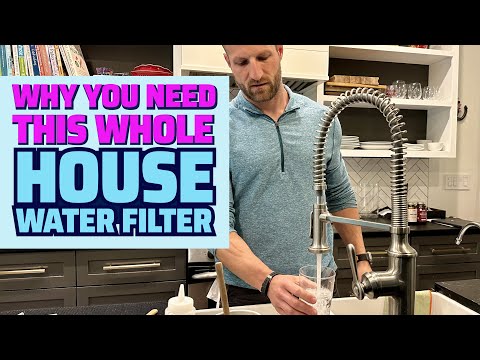
Hello Michael, thank you for this review. We formerly had an Aquasana Rhino system and nows it’s time to change. We are comparing the Radiant Life to Shell Water Systems (filtration and softener). Any thoughts? We may not be able to spring for the Radiant Life right now. Thank you kindly. Madeleine C
Hey Madeleine,
I don’t have hands-on experience with the Shell Water Systems unit but, based on the specs, it looks like a reasonable alternative!
Cheers,
Michael
Thank you for the review! We have very hard water. Will getting the whole house filtration solve the problem or will I need an additional system to soften or condition the water?
Thanks!
Daniela
Hi Daniela,
the whole house water filter should help to bring hardness levels down to reasonable levels but you’d have to test it to know for certain.
I can only afford one or the other right now. Im thinking I would prefer to get the RO system under my kitchen sink first since we cook and drink that water. Is that the best first step compared to the whole house option?
Hey Kelsey,
If we had to choose one, it’d be the whole house option because I wouldn’t want my skin exposed to chlorine and other chemicals on a daily basis from washing hands and taking a shower. In fact, we usually cook with regular (whole house filtered) tap water and we also use it for coffee because it tastes a bit better :)